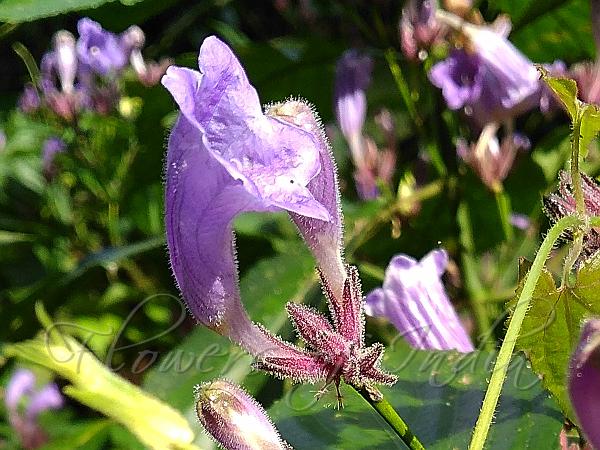|
| Panicled Coneflower |
|

|

| File size | 411806 |
| Original date | 1/7/20 1:11 PM |
| Resolution | 3000 x 4000 |
| Flash | Flash did not fire, auto |
| Focal length | 3.819mm |
| Exposure time | 1/221s |
| Aperture | 2.2 |
| Focus Distance | |
| Metering Mode | Center weighted average |
| Camera make | Xiaomi |
| Camera model | Redmi Note 5 |
| Sensor type | OneChipColorArea |
|
|
|
|
Photo: |
Botanical name: Strobilanthes paniculiformis Family: Acanthaceae (Acanthus family)
Panicled Coneflower is a perennial herb with unequal
paired leaves. Flowers are borne at branch-ends, in panicles of tight,
stalked heads. Inflorescence branches are up to 11 cm long, mostly
3-forked at the branching points, grooved. Bracts are paired,
leaf-like, variable in shape and size, 0.5-4.5 x 0.3-1.2 cm.
Flower-heads are few-flowered, not elongating in fruit. Flowers are
3.6-4 cm long, velvet-hairy outside, hairless inside, the basak tube
whitish, 1-1.5 mm wide, cylindrical for about 1.5 cm, then becoming
bluish-purple, gradually bent at 45 degree and widened to about 1.2 cm
at the mouth, equally 5-lobed. The lobes are 6-8 3-4 mm, broadly
ovate, rounded. Stamens do not protrude out. Sepal-cup is about 5-lobed
almost half to the base, outside sticky- glandular-hairy and eventually
purplish, inside hairless, sepals linear-oblong, blunt, growing from 7
mm to 13 mm long in fruiting, one sepal 1-2 mm longer than others.
Stems are probably rising up, at least 30 cm long, hairless. Leaves are
stalked, somewhat unequal in each pair, the smaller one about two
thirds the size of the larger one. Leaf-stalks are 0-1 cm long, blade
5-14.5 x 1-4.5 cm, narrowly oblong-elliptic, tapering at both ends and
decurrent, margin sawtoothed, but becoming entire towards the base,
hairless, paler beneath.
Capsule is 15 x 1 mm oblong, glandular-hairy, 4 seeded. Panicled
Coneflower is found in NE India to Myanmar, particularly Manipur,
Nagaland, at altitudes of 100-1700 m.
| Identification credit: Dipanakar Borah | Photographed in Behali Wildlife Sanctuary, Sonitpur District, Assam. |
• Is this flower misidentified? If yes,